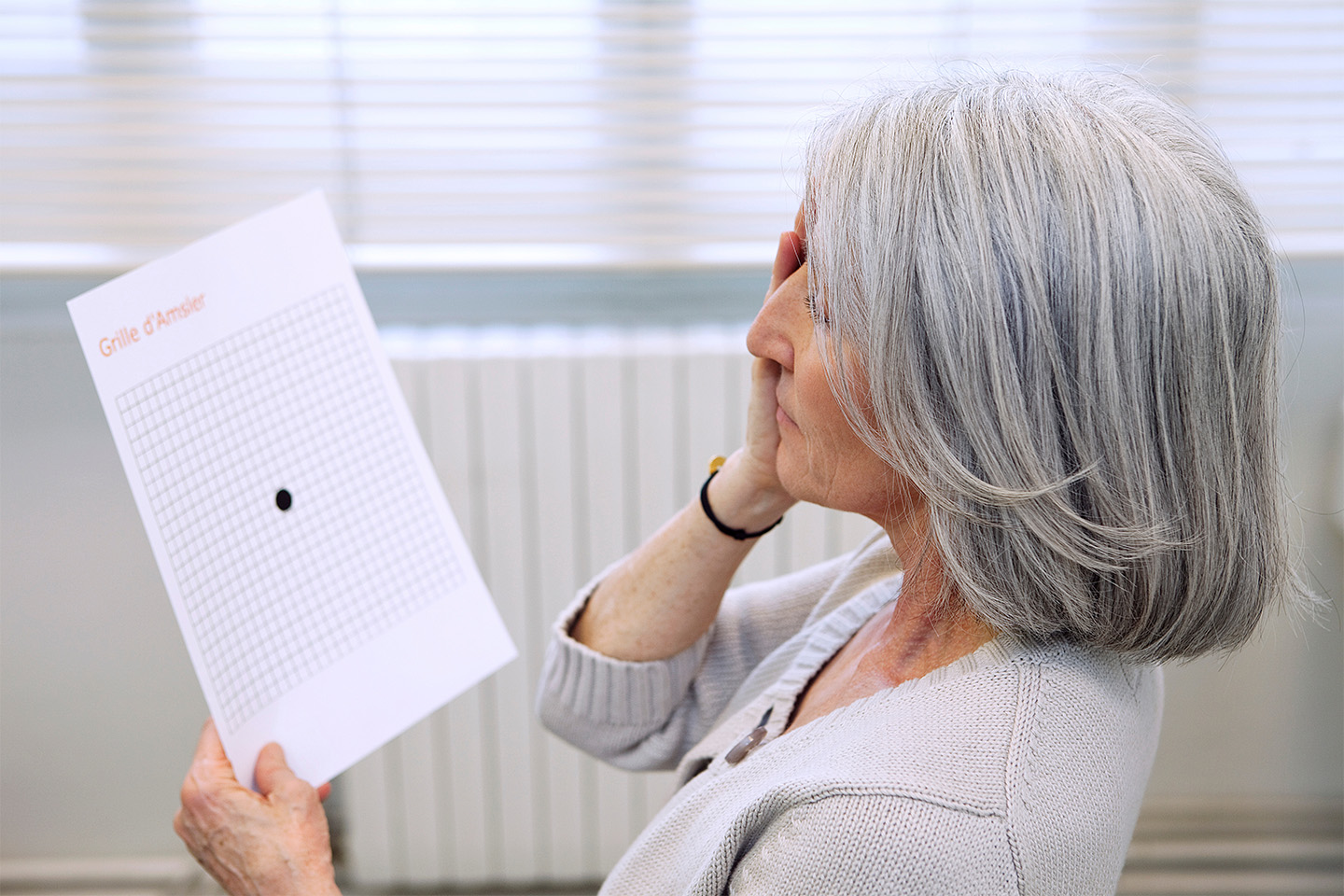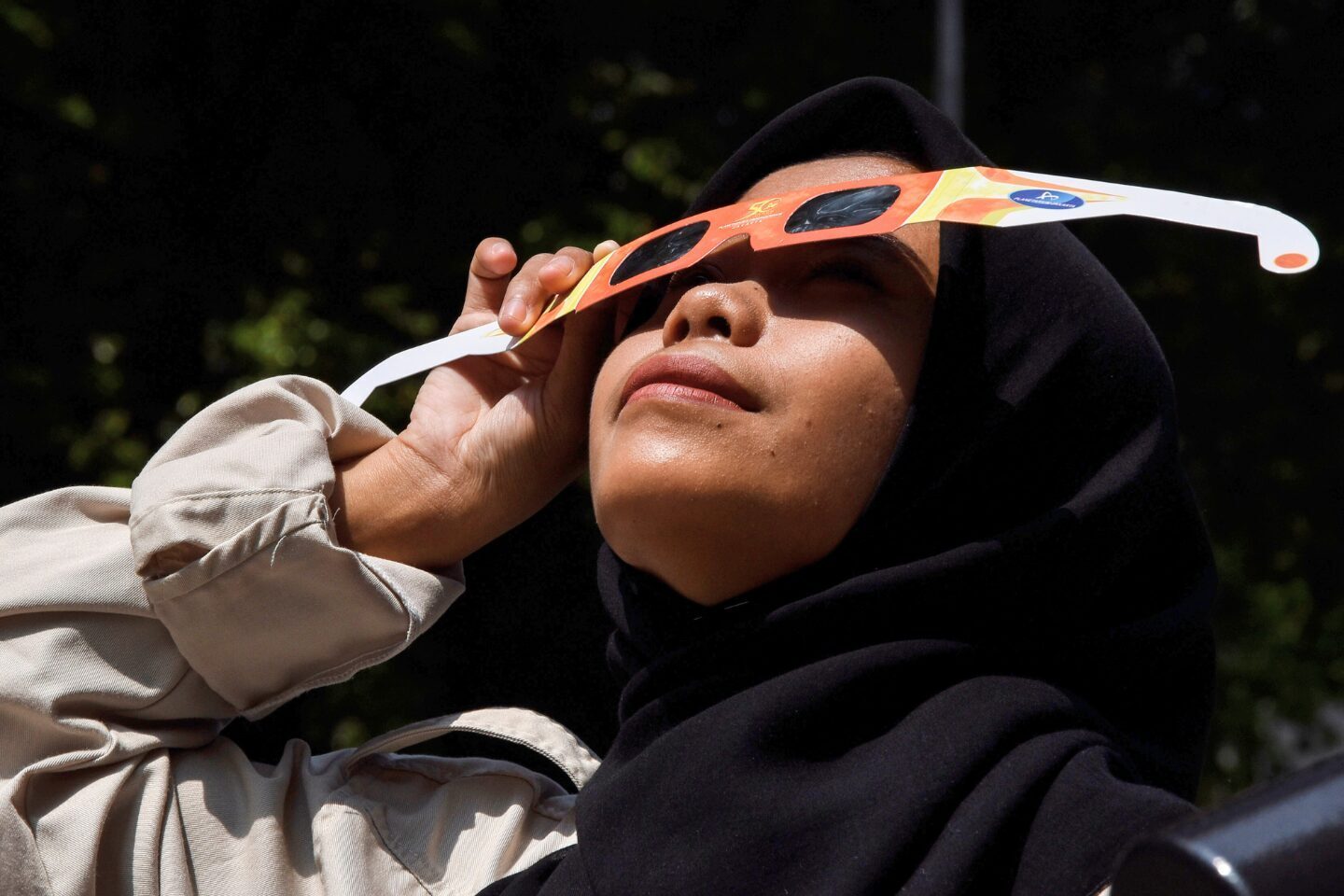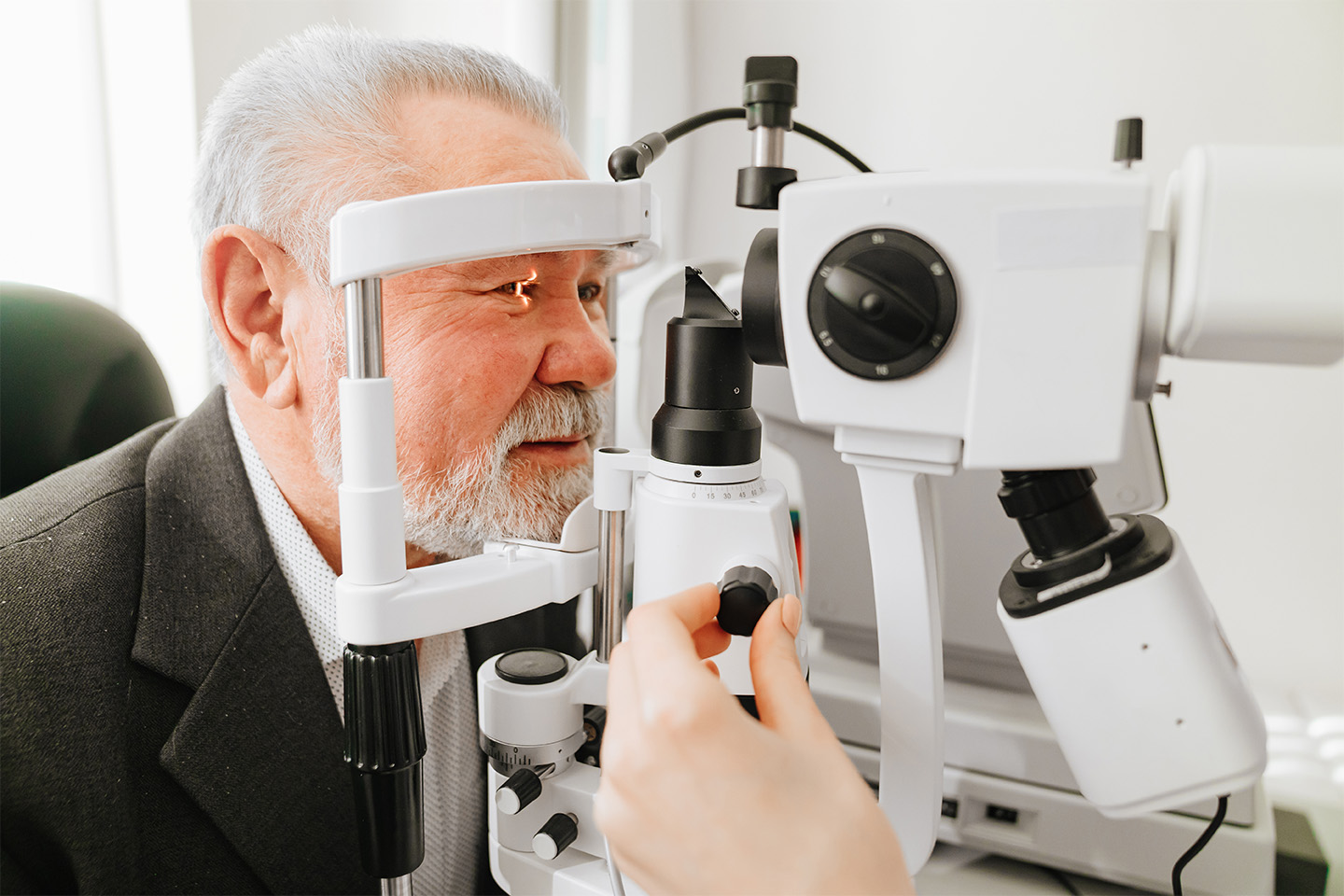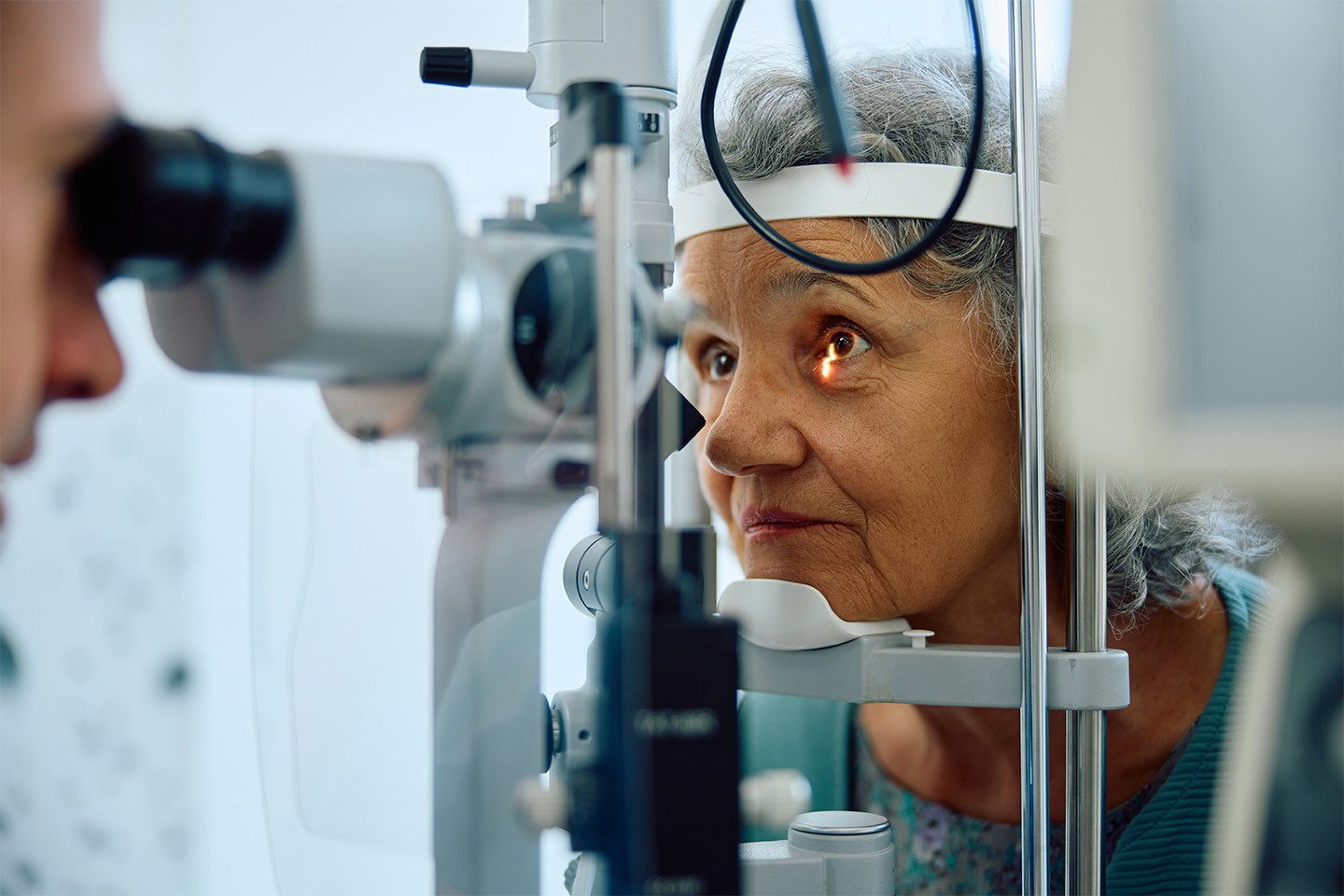7 Common Age-Related Eye Conditions

Most people will experience at least some degree of vision loss in their lifetime. Here’s what you should know about seven of the most common age-related eye conditions.
After the age of 40, many people begin to notice changes in their eyesight, even if they’ve never had vision problems before. While these developments can be disorienting and sometimes debilitating if left untreated, the good news is that they are a normal part of aging that can be managed relatively easily. To help you better understand how your vision may change over time, we’ve detailed seven of the most common age-related eye conditions below.
-
Age-related Macular Degeneration (AMD)
AMD is one of the leading causes of vision loss among people older than 50. It primarily causes damage to the macula — an oval-shaped area near the center of the retina that’s responsible for focusing vision — resulting in blurry or distorted eyesight that might be marked by blank spots. Treatment for AMD varies based on the severity of the condition and can range from taking specialized vitamins and minerals, to photodynamic therapy, laser surgery, and injections that block vascular endothelial growth factor.
-
Cataracts
A cataract is a clouding of the lens of the eye, resulting in blurry, distorted, or discolored vision. It is a very common condition, affecting more than half of all Americans by the age of 80. Early stage cataracts can be corrected through glasses, but as the condition progresses, the only treatment for it is surgery. Luckily, since cataracts are so common, cataract removal is among the safest and most reliable surgeries available, improving the vision of nearly 90% of patients.
-
Diabetic Eye Disease
Diabetic eye disease comprises a group of visual conditions related to diabetes, including diabetic retinopathy, diabetic macular edema (DME), cataract, and glaucoma. All of these conditions can lead to serious vision loss or, in particularly severe cases, blindness. Treatment depends on the particular condition, but controlling diabetes is essential in slowing the onset and worsening of diabetic eye disease. Early detection and treatment of these conditions reduce the risk of serious complications, so be sure to undergo regular eye exams.
-
Dry Eye
Dry eyes occur when the body’s natural tears cannot keep the surface of the eye adequately lubricated. They can affect anybody at any age, but the likelihood of suffering from them significantly increases with age. Dry eyes are typically treated conservatively with lifestyle changes or eye drops, but in very severe cases, certain types of surgery may be recommended.
-
Glaucoma
Glaucoma includes a variety of conditions caused by unusually high pressure in the eye. It can greatly damage the optic nerve, the nerve that conveys information from the eye to the brain. It tends to develop gradually and can produce a wide range of symptoms depending on the specific type of glaucoma. Since damage to the optic nerve cannot be repaired, treatment centers around prevention, as well as slowing its onset.
-
Low Vision
Low vision isn’t a specific condition, but a natural loss of eyesight that makes everyday activities difficult, even with the assistance of glasses and medication. It can be caused by a variety of diseases or disorders, but it’s often simply a natural consequence of aging. While vision loss cannot always be reversed, there are a variety of ways to manage low vision and the patient’s improve quality of life.
-
Presbyopia
While its name might seem unfamiliar, presbyopia affects nearly everyone at some point in time after the age of 40. As the eyes age, the lens of the eye becomes more rigid, making it more challenging to focusing on nearby materials. Many people handle it by using reading glasses, but presbyopia can also be corrected with a variety of surgeries such as LASIK or Kamra Corneal Inlay.
Here at Kleiman Evangelista Eye Centers, we understand how age-related conditions can affect your vision and impact your life. That’s why our experienced staff stays up-to-date with the latest science and techniques so that we can provide you with top quality care. If you worry that your vision has worsened with time, call today (800-714-2020) or visit us online to schedule a free consultation!
Turn To The Top Eye Doctors In Texas
Check out one of our locations below for the best eye care near you:









